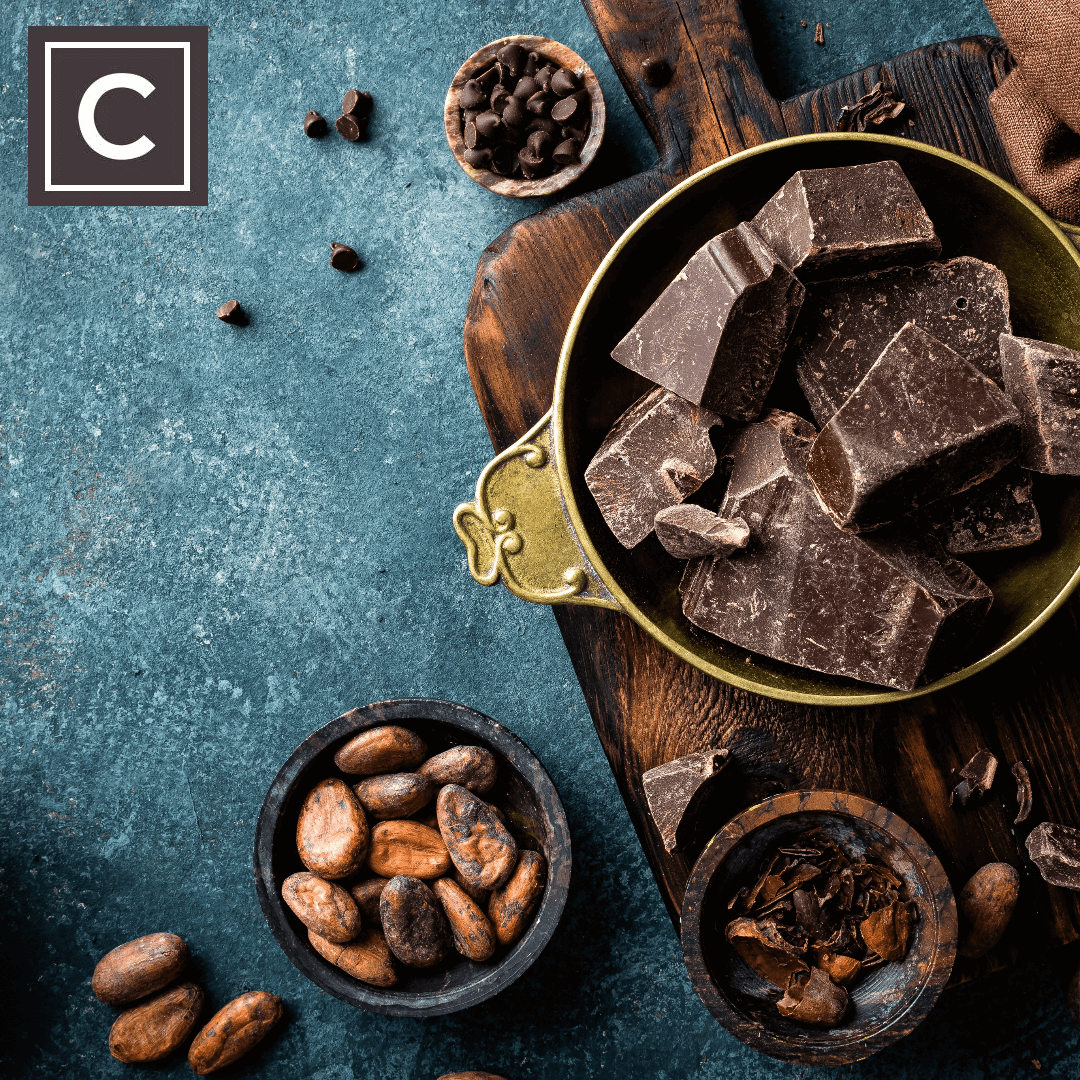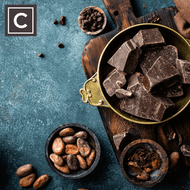Ingredient Glossary: Dark Chocolate
Posted by Emily on 1st Dec 2019 Reading Time:
What is Dark Chocolate?
Dark chocolate refers to the glossy, dark-reddish brown confection made from the cacao bean, scientifically known as Theobroma cacao. It is commonly available as pre-formed bars, blocks, or a coating for sweet fillings.

Before 1847, dark chocolate was primarily consumed as a thick, coarse beverage requiring frequent stirring to maintain consistency. Joseph Fry of Bristol changed this when he pioneered the first mass-produced chocolate bar. He separated the cacao beans into cocoa butter and cocoa solids. To create bars of dark chocolate, a specific proportion of cocoa butter is reintroduced to the cocoa solids through a complex process involving meticulous milling and temperature adjustments. This results in a smooth texture. The final step, tempering, crystallises the mixture to give it both a snap and shine.
Dark chocolate lacks added milk solids. It is typically made from cacao beans, sugar, emulsifiers such as soy lecithin to maintain texture, and flavourings like vanilla. The higher the cocoa content and the lower the sugar, the more bitter the dark chocolate. A small portion is considered a healthy snack, and its rich flavour makes it ideal for baking and melting in various desserts.
Cooking with Dark Chocolate
The term 'cooking chocolate' is somewhat misleading; all chocolate can be used for cooking. This term once indicated chocolate with higher cocoa solids and less sweetness than mass-produced bars. However, with 70% or higher cocoa solid chocolates on supermarket shelves, you can choose according to your preference. If your chocolate doesn't offer sufficient colour or flavour, you can enhance it by adding cocoa powder.
Melting chocolate in a microwave through gentle pulsing is often faster and more convenient than a hot water bath. Use short bursts of time and stir frequently to maintain a smooth consistency.
Storing Dark Chocolate
Dark chocolate doesn't require refrigeration. However, in hot climates or in centrally-heated homes, it may be more enjoyable when slightly chilled. Storing chocolate in a cool place for an extended period may lead to a phenomenon known as 'blooming,' which looks like mould but is harmless and doesn't alter the flavour. Properly stored, dark chocolate remains good for several weeks, if not months.

Availability of Dark Chocolate
Whether you consider it a vice or a treat, chocolate is never far away.
Choosing the Best Dark Chocolate
For purists, dark chocolate should only contain cocoa solids, cocoa butter, sugar, and perhaps vanilla. A higher percentage of cocoa solids generally means a deeper, more bitter taste. However, a high cocoa solid content doesn't necessarily equate to low sugar content, so it's important to read the label carefully.
Quality dark chocolate can be identified by two key characteristics: a high shine and a clean snap when broken. The shine is achieved through precise tempering during production. The snap is another indicator of quality and good craftsmanship. A lack of these characteristics often signifies an inferior product, regardless of its cost.

